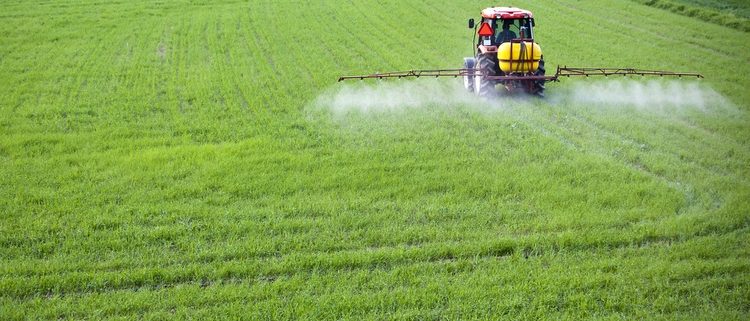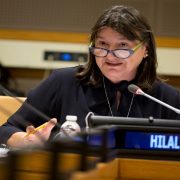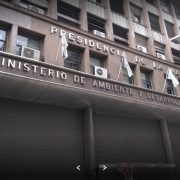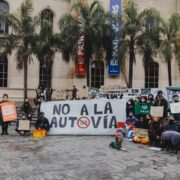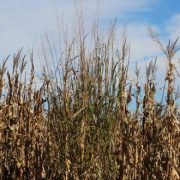“Precautionary distancing” in the application of agrochemicals
On June 12, 2020, in the city of Santa Fe, the Second Chamber of the Civil and Commercial Appeals Chamber, made up of Eduardo Sodero, Luciano Pagiliano and Armando Drago, resolved to establish a distance of one thousand meters for fumigations land around a family home. This resolution was made within the framework of a fumigation action filed by Norberto Oscar Bassi and Estefanía Bassi against the Commune of Zenón Pereyra, Carlos Schalbetter, Luis Ballarino, Ballarino Rural S.H. and “subsidiarily” against the province of Santa Fe.
“Below, we offer a google translate version of the original article in Spanish. This translation may not be accurate but serves as a general presentation of the article. For more accurate information, please switch to the Spanish version of the website. In addition, feel free to directly contact in English the person mentioned at the bottom of this article with regards to this topic”.
Two residents of the town of Zenon Pereyra (Santa Fe) promoted an amparo action in order to prohibit fumigations in the fields adjacent to their home, in compliance with city ordinance no. 11/11. Through the action they requested that manual fumigation within 1000 meters with any type of agrochemical product be prohibited, at the same time that they requested the planting of a live fence to mitigate the contaminating effects of the products.
The plaintiffs claimed to be neighbors of the fields of Messrs. Schalbetter and Ballarino (the former, leased to the latter) in which soybeans and wheat were planted and fumigations with agrochemicals (2-4 D and glyphosate) were carried out through the use of “mosquitoes”. Furthermore, the plaintiffs stated that due to the fumigations and the toxicity of the products, they suffered from respiratory difficulties and other health disorders.
In the first instance, the District Judge in Civil, Commercial and Labor Law of the city of San Jorge decided to grant the amparo action and to prohibit the fumigation of the neighboring fields to the plaintiffs at a distance of less than five hundred meters. , “With no type of agrochemical”. In his sentence, the judge repeated what was resolved in the case «Peralta c. Municipality of San Jorge ”, considering that“ nothing has changed ”(and therefore“ the criteria set must be maintained ”), without prejudice to rejecting the request for“ a living fence ”.
Faced with such pronouncement, the co-defendant Luis Ballarino and the actors filed an appeal for annulment and appeal. The co-defendant maintained that the ruling was void because it had been based on poorly added documentation, and that this was favorably valued by the amparo. Regarding the appeal, he argued that the proposed protection did not meet the necessary requirements for its “origin” (requirements for it to be dealt with by a judge) and that the damage or injury to health had not been proven.
As for him and the amparista, they maintained that the sentence was null and void because the court said nothing about the request for the tree perimeter fence, and that it had only “copied and pasted” the grounds for a previous ruling. Regarding the appeal, they stated that the judge, when setting the distances, did so without taking into account the geographical and urban characteristics of the area, and that he considered the right to property and work over the right to life, to health and a healthy environment, without considering the environmental public order and the principles of “no regression” and “progressivity”.
The resolution of the Chamber
The Chamber granted the “appeal for annulment” filed by the actors. The organ affirmed that the judgment of first instance had effectively omitted to pronounce on certain issues raised, and that it lacked sufficient justification since it had only limited itself to literally transcribing its own precedent of relative antiquity, without taking into account or referring to the provincial rules and premises at stake as well as the principles that assist in environmental matters.
To resolve, they had special consideration in the rights of people who, for different reasons, settle in places adjacent to the land where exploitations are carried out (read fumigations), understanding that it is not fair or reasonable that they are disproportionately affected . They also took into account the protection deserved by people who have not yet been born, with whom there is a debit of intergenerational justice.
The court decided to set a thousand meters – counting from the outer limit of the plaintiffs’ house – the minimum distance to observe to carry out land spraying. The judges argued that, as a result of the greatest existing scientific evidence regarding the effects of agrochemicals, it was necessary to “adjust” the distances for the fumigations, also taking into account what was established by the judgment in the “Peralta” case. c. Municipality of San Jorge ”, of December 2009, which has become a common thread through the reiteration of other provincial courts. In this way, they reiterated the need to optimize the protection of health and well-being in the face of agricultural practices, encourage the use of alternative herbicides and redirect production towards another less dependent on agrochemicals.
In the aforementioned case, the classic collision of the economic rights of agricultural producers with the essential rights to a healthy environment, to life and to the health of people is presented. For its solution, a concordance between them must be sought, without forgetting that the human being is the source of all rights, taking into account the irreparability of the affectation of the essential rights of the affected communities, especially when there is ample evidence that shows that the Agrochemicals are not harmless to people’s health.
This resolution joins the list of judicial decisions that establish a minimum protective threshold for people who have their center of life in the vicinity of agricultural operations, protecting the neighbors who suffer the consequences of the fumigations and are deteriorated, thus their health and its development possibilities. In this context, and with the existing scientific information, we want to highlight the prevailing need to update the protective laws, which, based on the precautionary principle, must urgently advance in restricting the use of agrochemicals.
More information
Authors
- Laura Fernandez
- Ananda María Lavayén
- Maria Laura Carrizo Morales
Contact
Juan Bautista López, juanbautistalopez@fundeps.org

